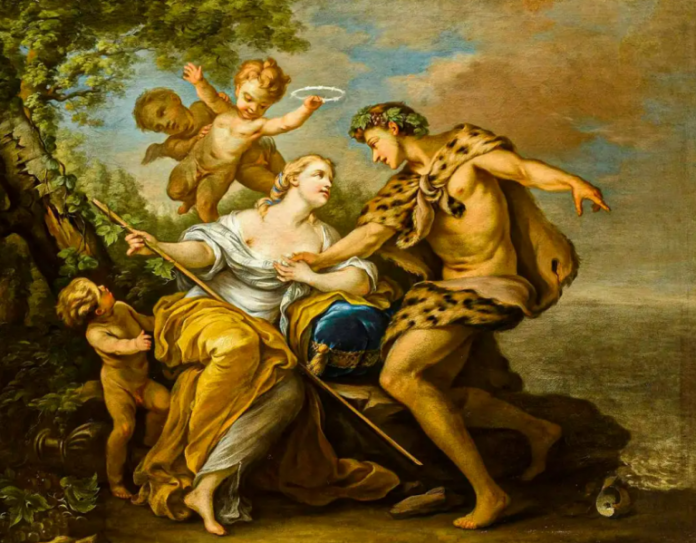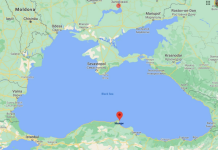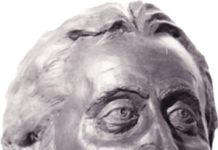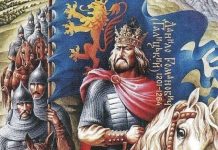Homer in the Iliad wrote that “Daedalus in Cnossos once contrived; A dancing-floor for fair-haired Ariadne” and scholars are confident that it was the Labyrinth dance that was associated with the fair-haired goddess. This dance was known as the Crane Dance in Delos. It would evolve into ‘Troy Game’ or Lusus Troiae in ancient Rome. Robert Graves offered the following explanation of the ritual: “The maze pattern has been shown to represent ‘Spiral Castle’ or ‘Troy Town’, where the sacred Sun-king goes after death and from which, if lucky, he returns. The whole myth is plainly presented on an Etruscan wine-jar from Tragliatella (see Lusus Troiae link above), dated from the late seventh century B.C. Two mounted heroes are shown; the leader carries a shield with a partridge device, and an ape-like demon perches behind him; his companion carries a spear and a shield with a duck device. They are riding away from a maze marked ‘TRUIA* (‘Troy’). Apparently the sacred king, though due to die like the partridge in the brushwood maze, and be succeeded by his tanist, has escaped. How he escaped, another picture on the same vase shows: an unarmed king leads a sunwise procession, escorted by seven footmen each carrying three javelins and a huge shield with a boar device; the spear-armed tanist, whose badge this is, brings up the rear. These seven footmen evidently represent the tanist’s seven winter months which fall between the apple harvest and Easter. The king is being warned of his ritual death. A Moon-priestess has come to meet him: a terrible robed figure with one arm menacingly akimbo, as she offers an apple, his passport to Paradise. The javelins threaten death. Yet a diminutive female figure, robed like the priestess, guides the king— if the hero is Theseus, we may call her Ariadne— who has helped him to escape from the maze. And he boldly displays a counter-charm— namely an Easter-egg, the egg of resurrection. Easter was the season when Troy Town dances were performed on the turf-cut mazes of Britain; and of Etruria, too, where the famous Lars Porsena of Clusium built a labyrinth for his own tomb. (Similar labyrinth tombs existed in pre-Hellenic Greece: near Nauplia, on Samos, and on Lemnos.) An Etruscan egg of polished black trachite, found at Perugia, with an arrow in relief running around it, is the same holy egg. Against the spearmen on the vase is written MAIM; against the king, EKRAUN; against the priestess, MITHES. LUEI. If, as seems probable, these words are Western Greek, they mean respectively: ‘Winter, ‘He reigned’, and ‘Having pronounced, she sets free. The letters written against Ariadne are indecipherable.”
While R. Grave’s idea with the Easter Egg is very interesting, other scholars think that it is the ball of thread in the hands of Ariadne instead. Curiously enough, the spindle whorls were found in some of the burials of, what the scholars think, priestesses of the Dionysian cult. The headdress of those priestesses, like the one from Ryzhanovka Kurgan, was usually decorated with the figures of dancing Maenads. Could those be the representations of Ariadne’s Dance? In such a case, the spindle whorls in Scythian tombs could be viewed as the representation of Ariadne’s thread.
The “Cradle of Civilizations” book has a description of two other unique burials of Scythian priestesses and addresses the topic of blond/ fair hair of many ancient heroes as well as gods and goddesses. Such as Ariadne for examle.










